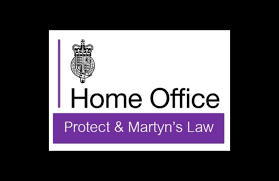Martyn’s Law, officially known as the Terrorism (Protection of Premises) Act 2025, is a landmark piece of legislation designed to improve public safety by requiring venues and organisations to have plans in place to respond to terrorist threats. For the NHS — and hospitals in particular — this is highly relevant. With thousands of people passing through hospital doors every day, these sites are both complex and vulnerable, making preparedness essential.
What Is Martyn’s Law?
Martyn’s Law was introduced following the Manchester Arena attack in 2017, in memory of Martyn Hett. It received Royal Assent in April 2025 and creates a new legal duty for qualifying premises and events to:
- Consider the risk of a terrorist attack
- Develop proportionate plans to respond and protect staff, patients, and visitors
The law applies to publicly accessible premises, including hospitals, and is designed to improve national resilience by embedding a culture of security and preparedness.
Key requirements include:
- Standard Duty (200–799 people): Basic preparedness measures such as lockdown, evacuation, and communication plans.
- Enhanced Duty (800+ people): More detailed risk assessments, designated senior individuals (DSIs), and evidence of training, drills, and governance.
- Enforcement: The Security Industry Authority (SIA) will regulate compliance.
Why Martyn’s Law Is Important for the NHS
Hospitals and healthcare facilities are unique environments. They are:
- Open and accessible – with constant public footfall, including patients, visitors, staff, and contractors.
- Complex sites – often spread across multiple buildings with emergency departments, high-risk areas, and restricted zones.
- High stakes – patients may be vulnerable, immobile, or reliant on life-sustaining equipment, making evacuation or lockdown challenging.
- Part of critical infrastructure – disruption to hospital operations can have far-reaching consequences for patient care and community safety.
Martyn’s Law ensures that security planning is not optional. For NHS Trusts, it will require a joined-up approach across estates, security, clinical operations, and staff training.
What This Means for Learning & Development (L&D) Managers
L&D teams will play a central role in ensuring hospital staff are prepared and compliant. Training and awareness are critical, and it’s essential to start planning now.
Top Tips for L&D Managers
- Identify who needs training
Map roles across your Trust — from frontline staff in A&E and reception through to estates, porters, volunteers, and contractors. - Develop tiered training programmes
- Awareness modules for all staff (suspicious behaviour, emergency communication, evacuation basics).
- Operational training for senior managers, DSIs, and security teams.
- Scenario-based drills and exercises across departments.
- Embed into mandatory training
Add Martyn’s Law awareness into existing induction and annual refresher programmes. Consider blended learning — short e-learning modules, classroom sessions, and live drills. - Align with existing emergency plans
Ensure training connects with fire evacuation, major incident response, and business continuity plans already in place. - Record and evidence compliance
Keep training logs, drill outcomes, and attendance records for audit purposes. Ensure your DSI has oversight. - Work with external partners
Collaborate with police, counter-terrorism teams, and local emergency services to ensure training is realistic and aligned with wider security planning. - Foster a security culture
Use posters, intranet messages, and awareness campaigns to remind staff that security is everyone’s responsibility.
The Bottom Line
Martyn’s Law is not just another policy — it represents a shift in culture for how the NHS and other public bodies approach security. Hospitals are busy, high-risk, and critical to the nation’s health infrastructure. Preparation, awareness, and staff training will be vital to compliance and — more importantly — to keeping people safe.
For L&D managers, this is the time to act. Begin reviewing your training needs, embed awareness into learning pathways, and make sure your hospital is ready, resilient, and compliant when enforcement begins.

Recent Comments